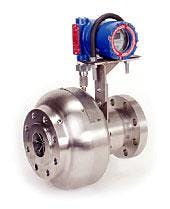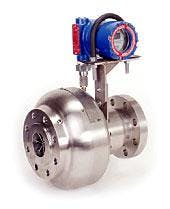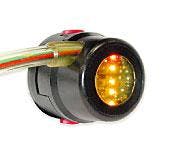In-line rotary separator helps stop compressor moisture damage
New IRIS in-line scrubber technology offers operators of reciprocating and turbocompressors an alternative to traditional methods of separating liquids from gas in pipelines.
The IRIS in-line rotary separator has an efficiency of 99.99% separation (down to 5 microns) and can be installed in a less than a day, the firm says.
The in-line rotary separator is a dynamic cyclone designed to work equally well in wellhead or pipeline applications to remove liquids from the gas flow in upstream pipelines. The IRIS unit replaces, or may be used to complement, undersized existing vessel-based scrubbers.
The compact scrubbing device installs quickly with minimal alterations. The bi-phase device contains a rotary drum that uses gas pressure to spin liquids out of the gases.
The IRIS assembly consists of three major components—an inlet housing, an exhaust housing, and a rotor/bearing system.
The inlet housing contains the swirl generating passages, liquid collection volute, inlet pipe flange, and inlet end bearing housing. The exhaust housing contains the diffuser/flow straightening vanes, the exit-end bearing housing, and the exit pipe flange. The rotor assembly consists of a drum pressed onto the shaft. Inlet and outlet bearings are specially designed roller element types with separate, pressure-balanced seals to minimize process contaminants entering the bearings.A single flange keeps the inlet and exhaust housings together to form the pressure containment.
IRIS devices can be affixed to pipe diameters of 1-8 in., suiting them for most gas well applications.
As an in-line device, retrofitting IRIS units to existing pipelines is easier than other methods of liquid and gas separation, the firm says. Because the IRIS separator is in-line technology similar to a valve or flow instrument, there's no additional piping or routing. Just two flanges connect the device to the existing pipeline, so the firm has been able to install a unit in several hours without difficulty, it says.
Because of the compact design and low weight, the unit does not require significant tooling or labor for change-out, and no additional maintenance is required for normal operation.
The unit also is suited to offshore gas compression applications where platform space is a premium.
Source: Multiphase Power & Processing Technologies, c/o Dresser-Rand, Paul Clark Drive, Box 560, Olean, NY 14760.
New data-management tools
DataLogix, a new suite of personal computer tools, helps control the flow of data between data sources.
The new tools promise to provide oil industry users the ability to:
- Access and compare data from multiple projects on one or more application data stores, across multiple domains.
- Analyze large volumes of information and identify E&P data anomalies quickly.
- Identify duplicate wells, seismic navigational data, log curves, and marker picks between many interpreters quickly.
- View the data interactively in graphical and spread sheet forms where the data may be corrected.
- Insert or merge and synchronize corrected data to the originating data stores, across one or more domains or saved to additional data stores.
Source: InnerLogix, 12777 Jones Rd., Suite 210, Houston, TX 77070.
Patent awarded cable, connector combination
A patent has been awarded to the SeaNet cable/connector, a product that provides a connection to electrical power and telemetry for a range of remotely operated devices, including sensors, cameras, lights, thrusters, actuators, and tools.
Cables, which have a connector at either end, are pressure balanced and oil-filled and are almost neutrally buoyant in seawater. Spring-loaded contacts on the connector helps ensure that the connection is always sound, and the cables can be disconnected only when two tabs on the connector head are simultaneously pressed.
Each cable contains seven conductors, two for power, one for ground, and four for signals. Typically, two signal conductors are used for video and two for data transmission. The power and signal channels are monitored using the bright LED status indicator lights that show through a window in the connector head.
The connector head has an incorporated integral perimeter lip seal that is not vulnerable to damage during installation and does not use an o-ring that could be lost or damaged. A fluid check valve in the connector face prevents leakage of compensation fluid when the cables are disconnected.
Cable penetrators (mating connectors) can adapt the cable/connector assembly to virtually any control system and any device requiring telemetry or power. The penetrator's electrical traces are a series of concentric circles, allowing an unlimited number of clocking positions for the cable. The penetrator can either allow or exclude the flow of compensation fluid into the device. If it is not possible to install a SeaNet penetrator in an instrument or tool (as in a rental device that cannot be modified), a SeaNet adapter is available to provide an interface to the cable/connector.
Source: Schilling Robotics, 201 Cousteau Place, Davis, CA 95616-5412.




